Scotland in the Red 2017: Research from the UK's leading
debt charity
Nearly 20,000 people in Scotland contacted us last year, an increase of 47% since 2013. Using this client data, Scotland in the Red highlights the issues and key statistics relating to debt in Scotland, gaining insight into the financial difficulties faced by our clients there.
1. For every £1 of income our clients in Scotland received per month in 2017, they had almost £10 of debt
For every £1 of income our clients in Scotland received per month in 2017, they had £9.96 of debt. This means that clients in Scotland have nearly 10% more debt than our UK clients relative to their income level. Depressed incomes and rising prices are significant factors behind the increasing need for debt advice.
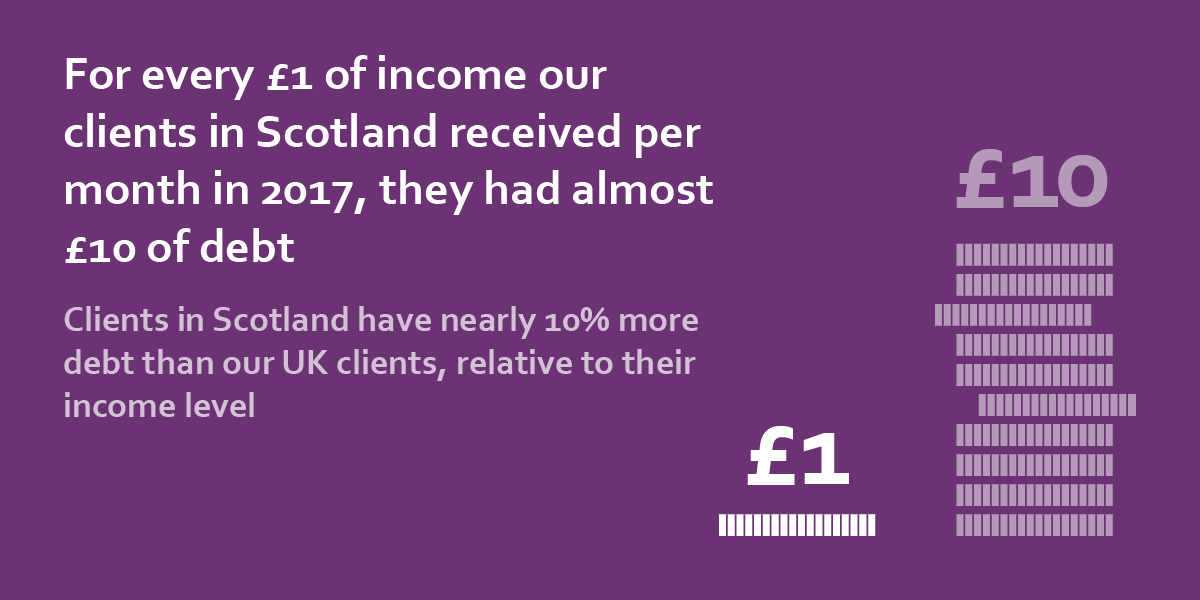
2. Incomes in Scotland haven't kept pace with inflation
The average monthly incomes of clients in Scotland have increased by only £60, or 5% over 5 years, from £1,193 to £1,253. This modest rise hasn't kept pace with inflation. Costs have risen faster than income, so incomes are down in real terms.
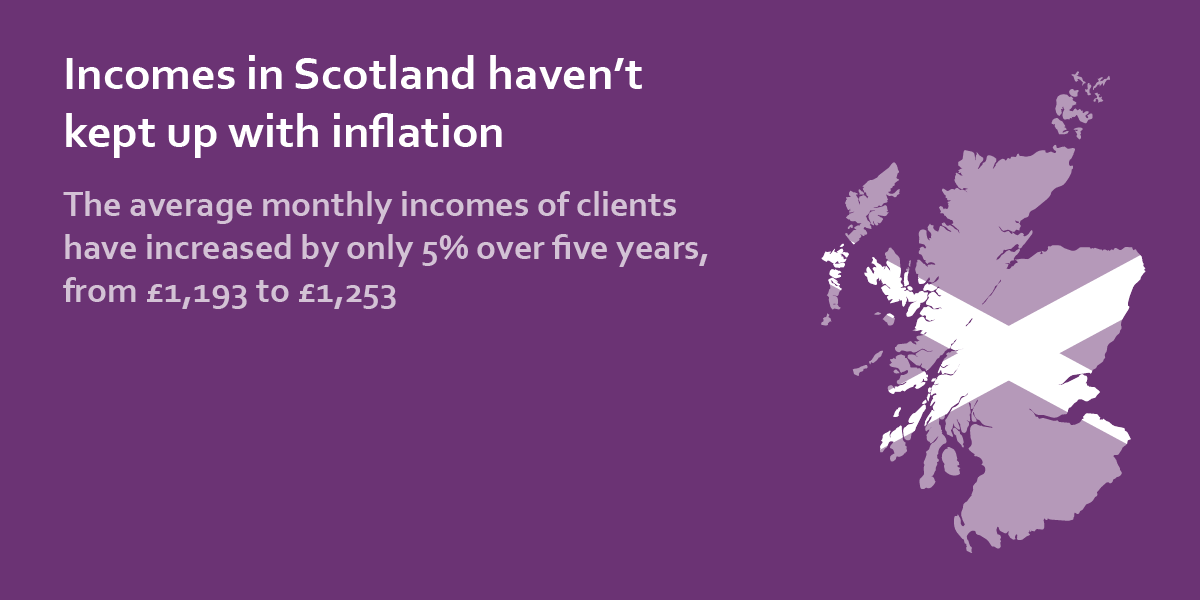
3. More clients in Scotland are falling behind their essential bills
41% of clients liable for council tax are in arrears. Those arrears have increased by 45% from £1,368 to £1,981. Electricity arrears have increased by 37% since 2013, with average arrears up from £543 to £745 in 2017.
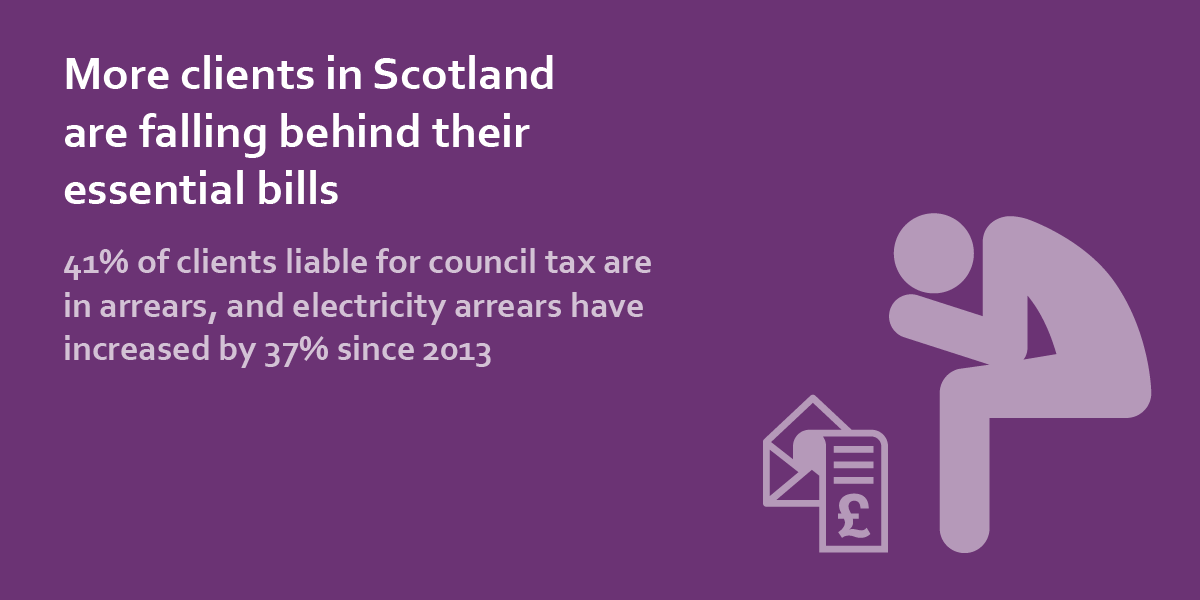
4. More than half of Scottish constituencies had one in four clients in rent arrears
The percentage of clients with a mortgage has shrunk from 39% to 24%. But mortgage arrears have increased 35% since 2013, to £3,523 in 2017. The percentage of clients with rent arrears increased from 44% of all clients in 2013 to 61% in 2017. Rent arrears have also increased by 25% to £740.
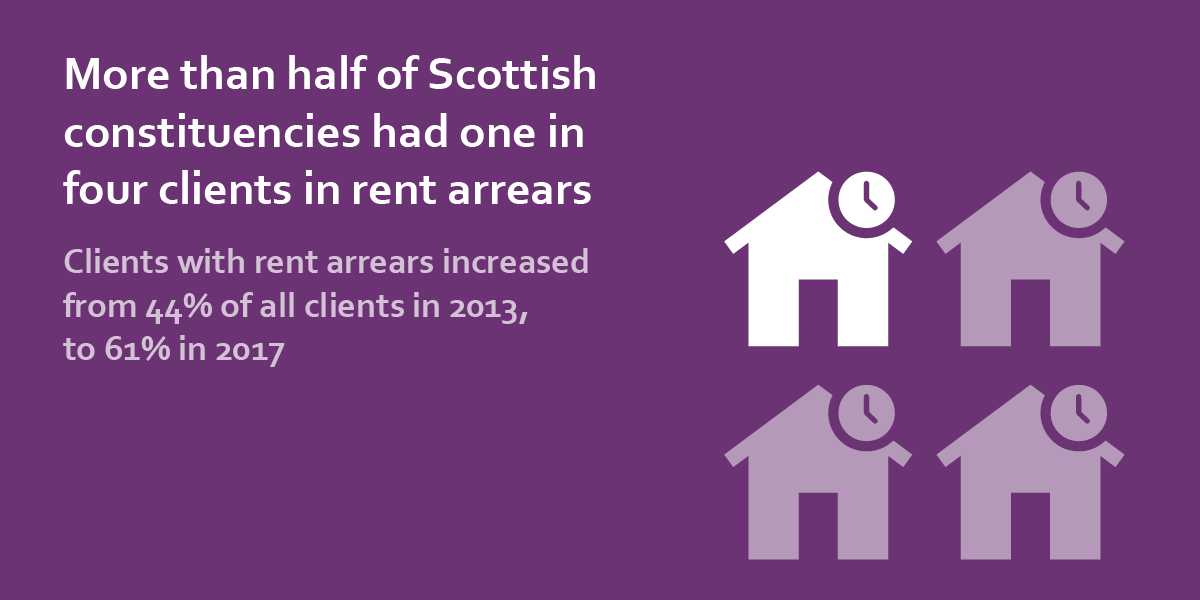
5. More young people are seeking help with debt
The percentage of clients aged 25-39 has grown by 6% since 2013; 36% of clients are in this age range. The 40-59 age bracket now makes up a smaller share of clients, though this age range still makes up the largest overall group.

6. The average client has just £15 left after paying their essential bills
The average budget surplus (the amount of money left in a client's budget after essentials have been covered) for clients is down 37%. The average client now has just £15 left after paying their essential bills. In some areas clients have no surplus and are in deficit. In 2013, 25% of Scottish constituencies had an average budget deficit; that figure had increased in 2017 to 37%, or 26 out of 73 constituencies.
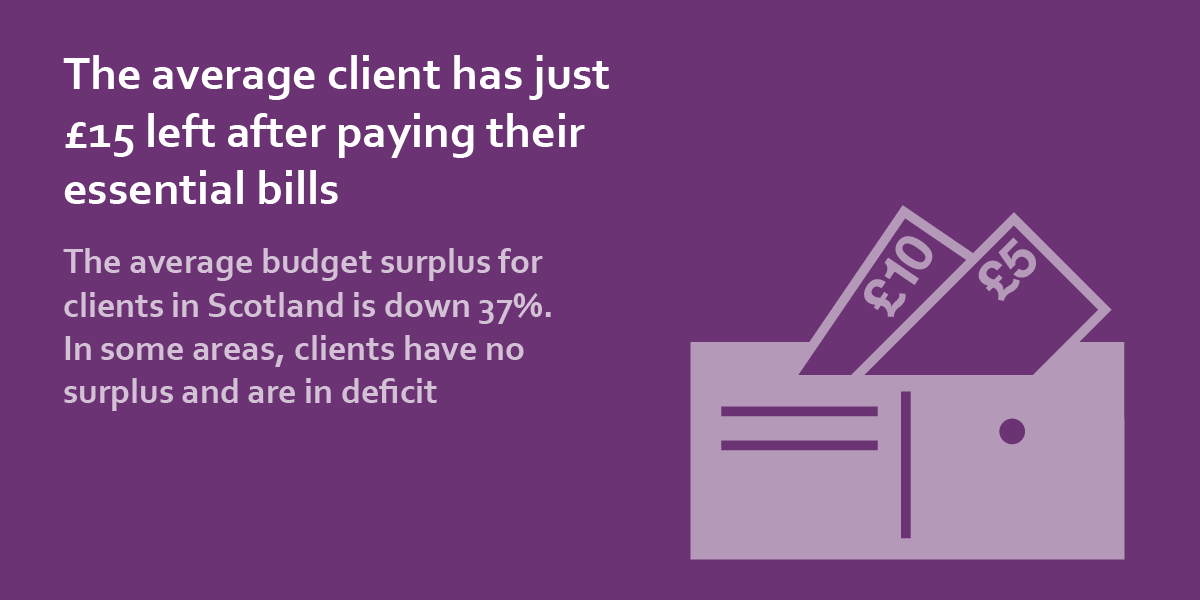
Download our report for the full picture
Download now